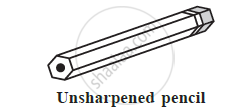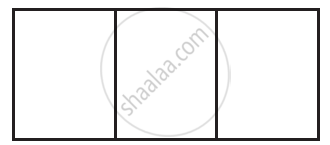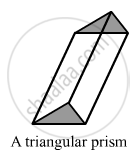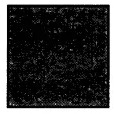Advertisements
Advertisements
प्रश्न
The following figure, given below, shows shadows of some 3D object when seen under the lamp of an overhead projector:

उत्तर

APPEARS IN
संबंधित प्रश्न
The given Figure are prisms or not?

The given Figure are prisms or not?

Is a square prism same as a cube? Explain.
Verify Euler’s formula for given solids

Using Euler’s formula, find the unknown.
| Faces | ? | 5 | 20 |
| Vertices | 6 | ? | 12 |
| Edges | 12 | 9 | ? |
Here is an incomplete net for making a cube. Complete it in at least two different ways. Remember that a cube has six faces. How many are there in the net here? (Give two separate diagrams. If you like, you may use a squared sheet for easy manipulation.)

Verify Euler's formula for the following polyhedron:

Using Euler's formula find the unknown:
| Faces | ? | 5 | 20 |
| Vertices | 6 | ? | 12 |
| Edges | 12 | 9 | ? |
Which among the following are nets for a cube?

Draw net for the following polyhedron :

If a polyhedron has 10 faces and 8 vertices, find the number of edges in it.
The figure, given below, shows shadows of some 3D object when seen under the lamp of an overhead projector:

A square
In this case, name the object.
Identify if the following net can be used to form a cube:

The dimensions of a cuboid are 6 cm, 4 cm and 3 cm. Draw two different types of oblique sketches for this cuboid.
Verify Euler’s formula for the table given below.
| Faces | Verticles | Edges |
| 4 | 4 | 6 |
Total number of faces in a pyramid which has eight edges is ______.
The number of edges in a parallelogram is 4.
How many edges does the following solid have?
Sphere
How many edges does the following solid have?
Octagonal Pyramid
A solid that has only one vertex is ______.
